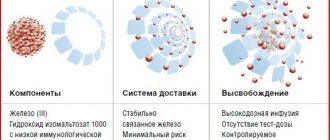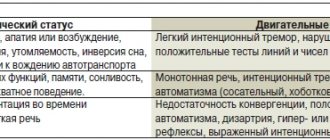Drug-induced hepatitis
- These are pathological changes in liver tissue caused by taking medications. The type of liver damage depends on the properties of the drug, its dose, and the initial condition of the patient.
Clinical and morphological variants of drug-induced hepatopathies are: necrosis of hepatocytes of the III zone of the acinus; necrosis of hepatocytes of the first zone of the acinus; mitochondrial cytopathy; drug-induced liver fibrosis; drug-induced steatohepatitis; acute and chronic drug-induced hepatitis; liver damage as a hypersensitivity reaction; drug tubular, parenchymal tubular and intraductal cholestasis; drug-induced sclerosing cholangitis; drug-induced biliary sludge; liver vascular damage (dilation of sinusoids, peliosis, veno-occlusive disease, obstruction of the portal and hepatic veins), drug-induced liver tumors.
Drug-induced liver damage leads to the appearance of jaundice in 3-10% of patients hospitalized with this pathology, and is also one of the reasons for the development of fulminant liver failure, which kills 2 thousand people in the world every year.
Diagnosis of drug-induced liver damage is based on medical history, clinical manifestations (jaundice); determining the activity of liver enzymes (alanine aminotransferase increases (more than 3 times) and aspartate aminotransferase), bilirubin (increases more than 2 times); as well as on the results of liver biopsy studies.
The outcome of drug-induced liver damage can be recovery, death of the patient, or the occurrence of persistent irreversible pathological changes in the liver requiring transplantation.
Classification of drug-induced liver injuries
Acute drug-induced hepatitis.
Occurs when using anti-tuberculosis drugs, aminoglycosides, antihypertensive drugs, antifungal, antiandrogenic drugs; tacrine, pemolina, clozepam; nicotinic acid preparations. In the liver of patients, necrosis and inflammatory infiltration can be detected. Develops approximately 5-8 days from the start of taking the drug.
Chronic drug-induced hepatitis.
Occurs when using isoniazid, fibrates (clofibrate), minocycline, nitrofurans. Acinar and periportal lesions can be found in the liver of patients; plasma cell infiltrates, fibrosis. Clinically it occurs as autoimmune hepatitis.
Liver damage as a hypersensitivity reaction.
Occurs when using sulfonamides, nonsteroidal anti-inflammatory drugs, antithyroid drugs; quinine drugs, anticonvulsants. Develops 2-4 weeks from the start of taking the drug. Patients present with symptoms of acute hepatitis with severe jaundice; arthritis, vasculitis, eosinophilia and hemolysis. In the liver of patients, one can detect “variegated” necrosis, involvement of bile canaliculi in the process, eosinophilic infiltration of the hepatic parenchyma; formation of granulomas is possible.
Drug-induced tubular cholestasis.
Occurs when using oral contraceptives containing estrogens and gestagens, androgenic and anabolic steroids. Patients are concerned about skin itching (with a slight increase in bilirubin levels). A transient increase in liver aminotransferase levels can be detected. Signs of cholestasis may be detected in the liver (mainly in zone III).
Parenchymal tubular cholestasis.
Occurs when using chlorpromazine, sulfonamides, semi-synthetic and synthetic penicillins, macrolides, histamine receptor blockers, oral hypoglycemic drugs - sulfonylurea derivatives. In patients, cholestatic syndrome may persist for several months and years after discontinuation of the drug. Signs of cholestasis may be detected in the liver (in zones I and III); eosinophil infiltrates, possible formation of granulomas.
Intraductal cholestasis.
Occurs when using benoxyprofen. Patients experience severe jaundice and may develop acute renal failure. In the liver, the ducts and tubules are filled with clots of concentrated bile without an inflammatory reaction in the surrounding tissues.
Drug-induced biliary sludge.
Occurs when using cephalosporins. This type of liver damage may be asymptomatic. In some cases, patients are bothered by attacks of biliary colic. Agglomerates of cholesterol crystals, mucin, calcium bilirubinate and other pigment crystals are found in the liver. These changes are the result of a violation of the physicochemical properties of bile.
Drug-induced sclerosing cholangitis.
Occurs when chemotherapy drugs are administered into the hepatic artery. Patients experience persistent cholestasis.
Drug-induced liver tumors.
Occurs when using hormonal drugs (estrogens, androgens, gestagens) and their antagonists. Variants of this type of liver damage are: focal nodular hyperplasia, adenoma, hepatocellular carcinoma.
How I was diagnosed
The local therapist immediately called an ambulance, which took me to the city infectious diseases hospital, to the ward with the same “fruits”. Then a blood test and diagnosis: viral hepatitis C.
I won’t say that the news about hepatitis shocked me. It just so happened: reckless youth in the dashing nineties. I couldn’t let the heroin wave pass me by - I got completely screwed. At that time, I had already had more than two years of “experience.” And although there was still money for a new syringe, the use of common utensils to prepare the potion for use occurred sporadically. Back then I couldn’t believe it was so dangerous. I still have no idea at what point I caught the virus. But if it’s through drugs, there’s no option.
Etiology of drug lesions
The type of drug-induced liver injury depends on the characteristics of the drug, the patient's condition, and other factors.
- Characteristics of the drug.
- Physicochemical characteristics.
- Dosage form.
- Dose.
- Route of administration.
- Patient's condition.
- Genetic predisposition.
- The nature of pharmacokinetics.
- Age (drug-induced liver damage occurs more often in older people).
- Gender (drug-induced liver damage occurs more often in women).
- Features of the existing pathology (for example, chronic hepatitis B and C).
- Other factors.
- Pregnancy.
- Idiosyncrasy.
- Drinking alcohol.
- Environmental factors.
Symptoms of hepatitis
In the early stages, hepatitis can occur completely unnoticed without specific symptoms. The intensity of symptoms usually depends on the cause of hepatitis, on the activity of the pathological process and its duration.
Typically, the main symptoms of hepatitis are:
- Decreased appetite;
- Vomiting, nausea, heaviness in the abdomen;
- Yellow color of sclera and skin;
- Malaise and weakness;
- Pain in joints and muscles;
- Fever.
Classification of hepatotoxic drugs
Drugs can be classified based on the degree to which their toxic effects are predictable.
Drugs that have a dose-dependent effect.
The toxic effect of drugs in this group depends on their dose, time of administration, and route of elimination by the body. Therefore, the side effects of these drugs are predictable.
- Antidepressants.
- Sedatives.
- Antiulcer drugs.
- Hormones.
- Antibiotics.
- Anti-tuberculosis drugs.
- Cytostatics.
- Drugs that cause idiosyncrasy.
Idiosyncrasy
is an individual intolerance to a drug, caused by the development of immune-mediated reactions to the drug or resulting from exposure to toxic metabolites that are detected during its biotransformation. Therefore, the side effects of these drugs are unpredictable.
- Non-steroidal anti-inflammatory drugs.
- Antidiabetic agents.
- Diuretics.
- Thyrostatic drugs.
- Antiparasitic agents.
Medicines are divided into groups depending on the mechanism of their damaging effect on the liver:
- Drugs affecting the liver parenchyma (hepatocellular mechanism of action).
- isoniazid (isoniazid tablet).
- methyldopa.
- paracetamol (Efferalgan, Panadol, Paracetamol tablet).
- diclofenac (Voltaren, Ortofen, Diclofenac table).
- Drugs that affect the processes of bile outflow (cholestatic mechanism of action).
- chlorpromazine (Aminazine).
- erythromycin (Erythromycin tablet).
- Anabolic steroid.
- Thiabendazole.
- imipramine (Melipramine).
- amoxicillin/clavulanic acid (Amoxiclav, Augmentin).
- Drugs with a mixed mechanism of action on the liver.
- Sulfonamides.
- Nitrofurantoins.
Treatment
First of all, it is necessary to discontinue the drug that causes drug-induced hepatitis. If a person cannot live without this medicine, a safer alternative with a similar effect must be found.
Causes and symptoms of drug-induced hepatitis
But it happens that there are no other treatment options. Then the doctor has to assess the risk-benefit ratio. If the benefit of the drug outweighs the harm, the patient should continue therapy. In this case, it is recommended to take ursodeoxycholic acid (UDCA) to protect liver cells. It reduces the toxic load on the organ and, accordingly, the degree of tissue damage.
If drug-induced hepatitis is caused by exposure to paracetamol, a specific antidote is prescribed - N-acetyl L-cysteine.
The patient should also give up alcohol, cigarettes, and limit the amount of “fast” carbohydrates and “bad” fats. This will help reduce the daily load on the liver and give the organ the opportunity to recover.
Mild and moderate forms of drug-induced hepatitis are treated on an outpatient basis; severe forms (with the development of hepatic encephalopathy) require hospitalization.
Diagnostic methods
- History taking
- Physical examination
- Laboratory research
- Instrumental diagnostic methods
- Diagnostic algorithm
- Diagnosis of drug-induced liver damage is based on medical history, namely:
- Information about the drug the patient was taking.
- Dose of the drug.
- Duration of taking the drug.
- Information about previous use of the same drug and reactions to it.
In addition, it is important to establish a temporal relationship between the identified clinical and laboratory data and the use of the drug.
It is necessary to evaluate the dynamics of the identified clinical and laboratory data after discontinuation of the drug, as well as to study the patient’s condition after repeated (accidental) administration of the same drug.
To confirm the diagnosis and carry out differential diagnosis, it is important to conduct a morphological examination of the liver biopsy.
In addition, additional examination of the patient is carried out to exclude other liver diseases.
- Normal pills?
Then I learned that three years ago the American company Gilead registered the first tablet form of a drug that directly affects the RNA of the hepatitis C virus and prevents it from being copied. This drug is called sofosbuvir. Combinations of this drug with later new products from the DAA line - direct-acting antiviral drugs - are by far the most effective means of treating hepatitis C. The cure rate is 95-97%, with virtually no side effects, and in tablet form!
This was great news. The bad thing is that a course of treatment with the original drug cost somewhere at the price level of a five-room apartment with European-quality renovation. But we were lucky. Gilead has licensed 11 Indian companies to produce generic drugs for the needs of poorer countries. Therefore, it was possible to purchase an analogue of the original drugs for quite reasonable money. The problem was that generics were not officially supplied to Russia, since our country was not considered the poorest. It was necessary to contact authorized trading companies in India directly and place the order privately.
How I bought Indian tablets
Now I catch myself thinking that I was lucky several times in this story. I was lucky to meet a competent hepatologist and lucky with the choice of the supplier’s website. After contacting me through the feedback form, my personal manager contacted me. She accompanied me promptly and competently until the very end of the transaction. In general, the organization of sales on our Russian side was a pleasant surprise.
First of all, in response to my application, I was introduced to the entire available range of medications with the active ingredient I needed. Since I had already initially decided with the doctor about the drug, I did not change anything and confirmed my order for three jars of Ladyhep. In response, they sent me payment details and an invoice - that’s what an invoice for payment is called in international commerce.
The intermediary offered five different generics of Harvoni, which varied slightly in price
This is what the payment details sent to me looked like:
Invoice for my order, the total cost of which was $740
With the invoice, I went to my bank and made a currency transfer. Then I sent a scan of the payment notification to the manager
My new generation drug. Source: LadyHep
I had to wait 12 days for confirmation of funds being credited. But the next day after confirmation, the parcel was sent immediately. I received a tracking code and waited another 12 days. In total, 27 days passed from the moment of application on the website to the moment of receipt of the shipment at the EMC point of issue.
I exhaled, decided to wait six days until the beginning of November, so that it would be easier to count the weeks, and start taking pills from the first.







